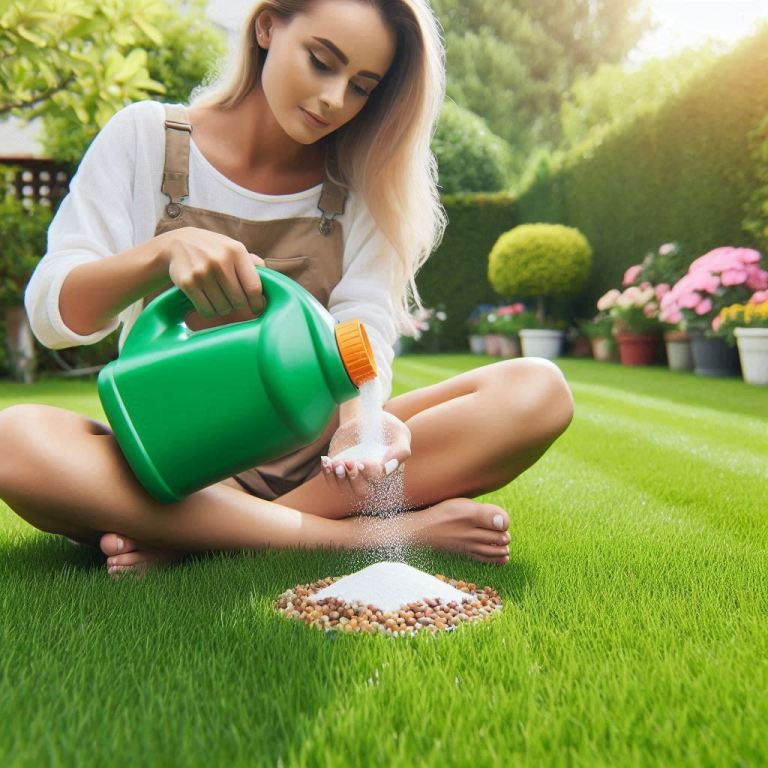A well-maintained lawn is the pride of any homeowner, offering a vibrant and lush outdoor space. However, achieving that perfect green yard requires more than just regular mowing. It’s essential to understand the importance of proper lawn fertilization and effective weed control. By applying the right techniques and products, you can create a thriving, weed-free yard that enhances your home’s curb appeal.
In this article, we will explore the best practices for lawn fertilization, weed prevention, and control techniques that promote healthy grass growth. Along with the main concepts, we’ll answer some of the most frequently asked questions on Google about lawn care and provide tips on keeping your lawn looking its best all year round.
What is Lawn Fertilization?
Lawn fertilization involves supplying your grass with essential nutrients to promote healthy growth, color, and resistance to diseases. Fertilizers typically contain three primary nutrients: nitrogen (N), phosphorus (P), and potassium (K)—commonly referred to as NPK. These elements support various aspects of grass development, from strong roots to vibrant green blades.
By fertilizing your lawn at the right times during the growing season, you give it the energy it needs to thrive, crowd out weeds, and remain resistant to pests.
Best Time to Fertilize a Lawn
The optimal time for lawn fertilization depends on the type of grass you have. For cool-season grasses (like fescue, ryegrass, and bluegrass), it’s best to fertilize in early spring and fall when the grass is actively growing. Warm-season grasses (such as Bermuda grass, Zoysia, and St. Augustine) should be fertilized in late spring and early summer.
- Spring Fertilization: This feeds your lawn after winter dormancy and helps it green up.
- Fall Fertilization: Applying fertilizer in the fall helps the grass store nutrients for the winter and bounce back stronger in spring.
Importance of Weed Control in Lawn Care
Weed control is critical for maintaining a healthy lawn. Weeds compete with grass for sunlight, nutrients, and water, ultimately weakening your yard and making it more prone to disease. By using a combination of pre-emergent herbicides, post-emergent treatments, and mechanical methods (like hand-pulling), you can control and prevent weeds before they take over.
Effective Weed Control Methods
- Pre-Emergent Herbicides: These are applied in early spring to prevent weeds like crabgrass from germinating. This proactive approach is highly effective for minimizing unwanted plants from taking root.
- Post-Emergent Herbicides: Use these treatments to kill existing weeds that have already started growing. They are applied directly to the leaves of weeds, killing them at the source.
- Manual Weed Removal: For small infestations, hand-pulling or digging out weeds by their roots is a chemical-free method that can be highly effective, especially in areas where herbicides are less desirable.
How Often Should You Fertilize Your Lawn?
For most lawns, fertilizing two to four times per year will keep the grass healthy. Over-fertilizing can burn the grass, while under-fertilizing may lead to weak growth and susceptibility to weeds and diseases. It’s important to follow a fertilization schedule based on the needs of your specific grass type and local climate conditions.
Lawn Fertilization and Weed Control Tips
- Test Your Soil: Before applying fertilizer, test the pH level and nutrient content of your soil to ensure you’re providing the right nutrients.
- Use a Spreadable Fertilizer: For even application, use a broadcast or drop spreader. Uneven fertilization can lead to patchy growth.
- Water After Fertilization: Lightly water your lawn after fertilizing to help the nutrients seep into the soil.
- Mow Regularly: Keeping your grass at an optimal height can help it compete with weeds by blocking sunlight to their seeds.
- Mulch Grass Clippings: Instead of bagging, leave grass clippings on the lawn. They break down and return nutrients to the soil.
FAQ: Lawn Fertilization and Weed Control
Q: How do I know if my lawn needs fertilizer? A: If your grass is pale, growing slowly, or thinning out, it may be a sign that your lawn needs fertilization. A soil test can also reveal nutrient deficiencies.
Q: What are the best natural methods for weed control? A: Natural weed control methods include hand-pulling, mulching, and using organic pre-emergent herbicides made from corn gluten. Proper lawn maintenance, such as thick grass growth and regular mowing, can also naturally deter weeds.
Q: Can I apply weed control and fertilizer at the same time? A: Yes, many products combine fertilizer and herbicide (known as “weed and feed”) to tackle both fertilization and weed control at once. However, be sure to follow the product instructions for proper application timing and dosage.
Q: What should I do if I have bare patches in my lawn? A: If you notice bare spots in your yard, reseeding may be necessary. After reseeding, apply a starter fertilizer to help the new grass establish quickly, and avoid heavy foot traffic on the area until the grass is fully grown.
Conclusion
Achieving a healthy, green lawn requires a balance of proper fertilization and diligent weed control. By understanding your grass type, following a fertilization schedule, and using the right weed control methods, you can create a yard that is both lush and resilient. Regular lawn care will keep weeds at bay, promote vigorous growth, and ensure your outdoor space remains an inviting place for you and your family to enjoy.

